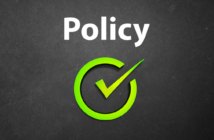Inflation has dominated the news in 2022. For consumers, what cost $1 in May 2021 now costs 8.6% more, on average. Prices for fuel, groceries and other living expenses are soaring to record highs. In at least one respect, the nation is now experiencing what motor carriers have been through with commercial auto insurance.
Rising costs of accident litigation and “nuclear” verdicts (settlements more than $10 million) have resulted in double-digit annual increases for insurance premiums, the fourth-highest operating cost for fleets. Fast-rising prices for vehicles and parts also have contributed by ballooning the cost of accident claims.
The good news is that camera-based telematics systems have shifted the paradigm for assessing and managing risk. By using video and data insights from these systems, fleets can pare down insurance costs by improving driving behavior, preventing false claims, and working with insurance companies that offer pricing discounts for lowering accident risk.
Proactive Driver Training
Video safety systems can reduce insurance costs by giving fleets insights to risky driver behaviors to make immediate corrections from:
Coaching. Fleet managers can use driver scores and event videos to give positive and constructive feedback.
In-cab alerts. Advanced camera systems can instantly alert drivers to risky behaviors like unsafe following distance and cell phone use.
Eliminating blind spots. Fleets can eliminate blind spots for drivers with integrated camera systems that display live video.
An Immediate Defense
When accidents do happen, fleets can instantly access video and telematics data to quickly determine who is at fault and respond accordingly.
Sending a video clip to the driver or police officer at the accident scene can help ensure accurate documentation. Once reports are written it can be challenging to get law enforcement to make changes or updates.
If the evidence shows a fleet’s driver is at fault, however, the information can help fleets settle with plaintiffs and avoid protracted litigation costs.
The ‘insurtech’ Advantage
A small but growing number of insurance companies are harnessing the power of video and telematics data to reward fleets for making ongoing safety improvements.
For example, High Definition Vehicle Insurance (HDVI) is one of several “insurtech” companies that offer commercial auto policies with dynamic pricing. HDVI connects to a fleet’s ELD solution and pays for the hardware and subscription costs to use video telematics from providers like Trimble Transportation.
HDVI has 12-month policies that include the cost for fleets to use the technology for a competitive base rate. The company’s HDVI Shift insurance product then rewards fleets with monthly discounts of up to 12% for safe driving behaviors. Policy premiums can never go above the initial base rate; they can only get better during a 12-month policy.
Within the first quarter of a new HDVI Shift policy, 75% of customers get safer on the metrics of harsh braking and speed. By the second quarter, 90% improve. Within the first six months, most fleets are getting discounts of 7% to 8% on their insurance.
No matter what insurance provider fleets use, data insights from video-based safety and telematics systems can improve their negotiating position during the next policy renewal. Trimble Video Intelligence, for instance, has metrics that fleets use to track the number of miles between risky events such as hard braking and speeding. Fleets can also compare their results with aggregate data from fleets of similar size.
Besides helping fleets reign in the cost of insurance, drivers are benefitting from camera-based telematics systems that safeguard their lives and livelihoods by protecting them from false claims and by expanding their visibility and awareness of risks in their work environment.



